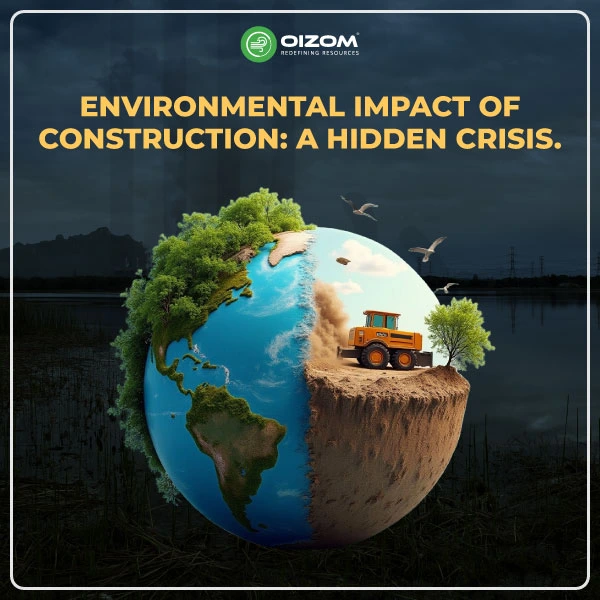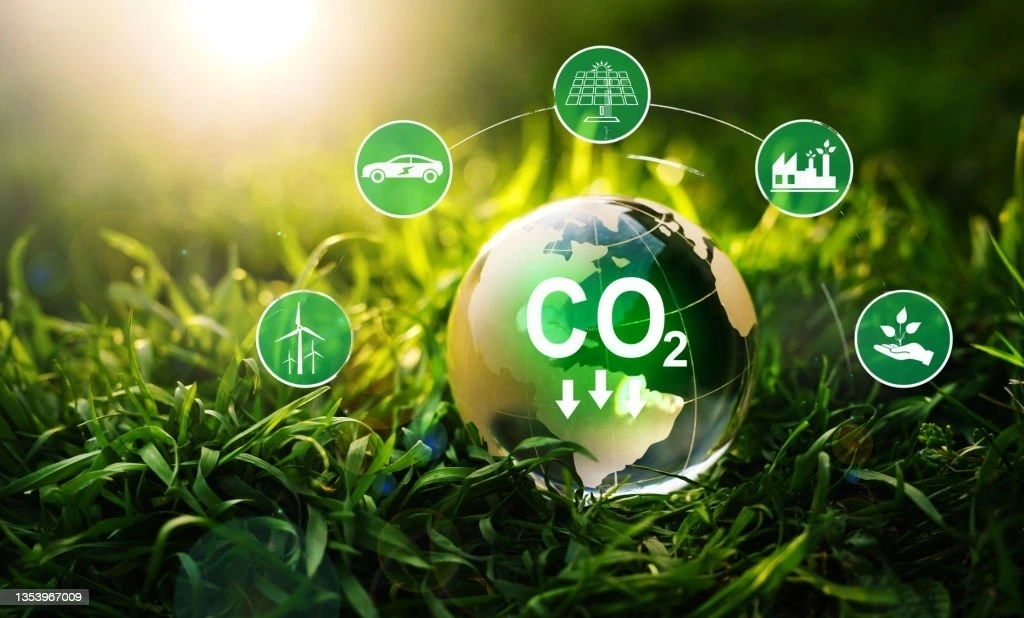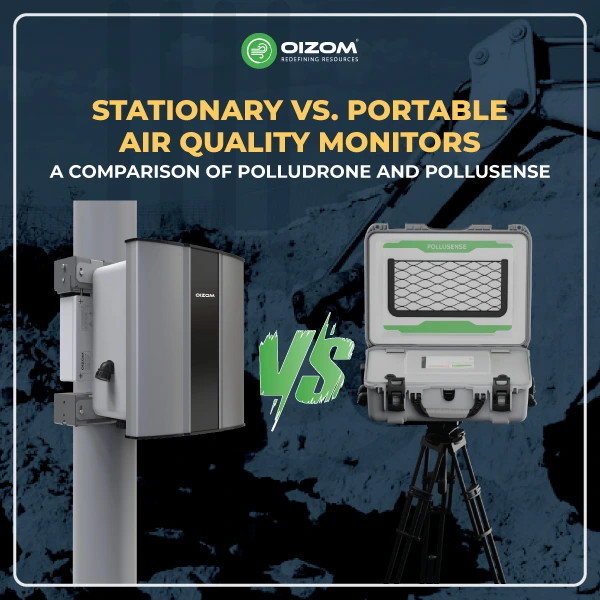Summary of Blog
The construction industry significantly impacts the environment, accounting for 23% of air pollution, 40% of drinking water contamination, and 50% of landfill waste. Key issues include habitat loss, ecosystem disruption, air and noise pollution, water pollution, and waste generation. Sustainable construction practices are essential to mitigate these impacts. Strategies include using eco-friendly building materials like recycled plastic and bamboo, implementing erosion and sediment controls, reducing waste through recycling, and obtaining green building certifications like IGBC and LEED. These practices lower carbon emissions, reduce operating costs, and improve indoor air quality. By prioritizing sustainable building, the industry can protect natural resources and promote healthier environments for future generations.
Introduction
Did you know why the construction industry contributes such a significant portion of mainstream air pollution worldwide and yet, it is rarely discussed in most city-level pollution control plans? While traffic and factories often take the blame for urban air quality issues, the dust, diesel fumes (NOx), and fine particles (PM2.5 and PM10) released during construction are an invisible but dangerous threat. From excavation and demolition to cement mixing and transport, construction activities silently degrade the environment and public health every day. And despite its impact, construction pollution often slips through regulatory cracks simply because it’s hard to see, measure, or control in real time. That’s where smart air quality monitoring solutions like Oizom’s Dustroid come in, helping cities and developers track and act on pollution data directly from construction sites.

Key Environmental Impacts of Construction
Air Pollution and Dust Emission
- Construction activities are a significant driver of environmental air degradation. The sector is responsible for nearly 39% of energy and process-related CO₂ emissions, largely due to material production (like cement and steel), machinery use, and transportation.
- One often-overlooked yet highly impactful component is dust emission. Construction generates vast quantities of Particulate Matter (PM10 and PM2.5) from materials such as cement, sand, concrete, and stone. These fine dust particles can remain suspended in the air for long durations and travel large distances, leading to widespread environmental and health effects.
- Dust clouds not only reduce local air quality but also disrupt nearby ecosystems. Fine particulates can settle on vegetation, impairing photosynthesis, contaminating water bodies through runoff, and degrading soil health.
- With rising urban development, air pollution and dust emissions from construction must be monitored and mitigated through smart planning, real-time dust monitoring, and environmentally responsible practices.
Noise Pollution in Urban Areas
- Urban construction brings with it a constant problem we often oversee, Noise. From jackhammers to concrete mixers, the machinery used in building projects generates high-decibel noise that disrupts daily life for city dwellers and local ecosystems.
- In densely populated areas, prolonged construction noise along with other secondary noises such as traffic affects mental well-being, increases stress levels, and disturbs daily routines. But it’s not just about humans, birds, animals, and insects sensitive to sound can lose nesting grounds or alter their natural behavior due to constant exposure to noise.
- Frequent exposure to high noise levels can contribute to long-term health risks such as hypertension and hearing loss. To manage this impact, noise barriers, restricted working hours, and quieter machinery should be integrated into urban planning and construction practices.
Soil Pollution and Habitat Destruction
- Construction doesn’t just change skylines, it also disturbs the land beneath. Excavation and site work often contaminate soil with fuel spills, chemical runoff, and construction debris like paint, concrete, and oils, degrading its quality and harming soil life.
- Clearing land also fragments habitats, displacing wildlife and disrupting migration paths. Even partial land loss can lead to an imbalance in ecosystems. Sediments and toxins from degraded soil can further pollute nearby rivers and lakes.
- To minimize this, builders should adopt eco-sensitive practices like soil stabilization, erosion control, and biodiversity buffers to protect both land and life.
Waste Generation and Landfill Overflow
- Construction projects also generate large volumes of garbage. A study found that US building and demolition operations generated 569 tons of debris. Much of it ends up in landfills across the country or goes to incinerators, which emit smoke and pollutants into the atmosphere as they operate. Both ways of disposal have a negative influence on the environment.
- Construction trash is one of the top contributors to industrial waste. Demolition projects account for nearly 90% of that amount, meaning most project materials are never reused.
GHG Emission from Machinery
Construction machinery is a major contributor to greenhouse gas (GHG) emissions on-site. Diesel-powered machines such as excavators, cranes, loaders, and generators release significant amounts of carbon dioxide (CO₂), nitrogen oxides (NOₓ), and particulate matter into the atmosphere.
Most equipment runs for long hours without optimal emission control, making the construction sector one of the largest industrial emitters of localized air pollution. These emissions not only contribute to climate change but also deteriorate urban air quality, affecting workers and nearby communities.
Switching to cleaner fuels, electrified equipment, and better maintenance practices can help reduce the carbon footprint of construction activities.
How Does Construction Affect The Environment?
Have you ever heard the statement, ”Everyone acts as if nothing will change, yet everything changes”? It couldn’t be more true regarding building and its environmental approach. Some people pretend the climate isn’t changing and their companies have no environmental impact. However, many people are unaware of how construction pollution affects the environment. The construction sector accounts for 23% of air pollution, 40% of drinking water contamination, and 50% of landfill garbage.
Let me share one fact regarding the construction industry- Construction is a booming global industry. Between now and 2060, the world will likely construct almost 2.5 trillion square feet of new developments, equivalent to adding another Paris to the planet every week. If you’re wondering how to reduce the environmental impact of building, you are not alone. Here, I will help you make your construction site eco-friendly. This article will explore the environmental impacts of construction, how to run a green construction company, and sustainable construction materials and processes.
Health Risks Linked To Construction Pollution
Construction sites are major sources of air pollution, especially fine particulate matter (PM2.5 and PM10) and nitrogen dioxide (NO₂). These pollutants are primarily released from diesel-powered equipment collectively known as non-road mobile machinery (NRMM) as well as from dust generated during demolition, excavation, and material handling.
The most overlooked source is where dust gets attached to vehicles leaving the site and is later resuspended on public roads, remaining airborne for days or even weeks.
The health risks associated with construction are as follows:
- Respiratory illnesses like asthma, bronchitis, and lung infections
- Cardiovascular disease and increased risk of mortality
- Lung cancer due to long-term PM exposure
- Impaired lung function among vulnerable population
In fact, diesel particulate matter is now classified as carcinogenic by the WHO. To summarize this construction pollution isn’t just a compliance issue, it’s a public health concern. Real-time air quality monitoring around sites can help mitigate risks and safeguard workers and nearby communities.
Construction Dust & Air Quality: The Missing Link
While discussions around urban pollution often highlight traffic and industry, the contribution of construction dust to poor air quality is often overlooked; it’s the “missing link” in many air quality strategies.
When people talk about urban air pollution, they usually think of vehicle emissions or industrial smoke. But one major contributor that often slips our minds is construction dust.
Activities like demolition, excavation, cement mixing, and cutting release high levels of particulate matter (PM10 and PM2.5) into the air. These particles are light, travel long distances, and linger for days, significantly degrading air quality in surrounding areas.
Yet, construction dust is rarely in the city-level plan. Hence, lack of focus is the missing link in many air quality improvement strategies.
To close this gap, cities and developers must:
- Monitor PM levels in and around construction zones
- Use dust suppressants and water spraying
- Cover or contain materials on-site
- Track data to time dust-heavy work during low-impact hours
Recognizing construction dust as a major pollutant is the first step toward truly cleaner cities.
The Role Of Air Quality Monitoring In Construction Projects
Construction projects are among the most pollution-intensive urban activities. Without real-time monitoring, these emissions often go unnoticed unless visible impacts are seen.
Air quality monitoring plays a crucial role in:
- Tracking pollution hotspots during demolition, excavation, and material handling
- Ensuring compliance with environmental and municipal regulations
- Protecting worker and public health by identifying unsafe exposure levels
- Planning dust suppression activities like water spraying or installing barriers
- Timing high-emission tasks during low-traffic or low-wind periods to reduce dispersion
- Building public trust through transparent reporting and responsible practices
Solutions like Oizom’s Polludrone or Dustroid enable construction firms to continuously monitor PM10, PM2.5, gases, and noise levels on-site, giving them the data to act fast, report confidently, and reduce environmental impact.
Conclusion
Finally, Green infrastructure is an important and attractive response to our difficulties in a fast-changing world. Eco-friendly housing development has the potential to counteract climate change, protect our planet’s resources, and provide healthier, more sustainably built habitats for future generations. However, major issues are faced during the construction, such as dust emissions, noise pollution, and other VOCs emitted during this phase. But, to plan proper mitigation strategies, one needs to have a Dustroid at their site, which measures various PMs and gives accurate real-time data on the cloud platform.
By incorporating sustainable building practices, such as innovative design principles, utilizing sustainable materials, waste reduction, and green building certifications, we can revolutionize how we construct and inhabit our buildings, conserve natural resources, and contribute to the overall well-being of humans and the environment.
FAQs
Construction activities release dust (particulate matter), toxic gases, and noise, which harm air quality, contribute to climate change, and affect community health.
Exposure to construction dust and emissions can lead to asthma, lung infections, allergies, and even long-term cardiovascular and respiratory diseases.
Air monitoring systems provide real-time insights into pollution levels, helping companies comply with regulations, reduce risks, and ensure a safer environment.
Using dust suppression methods, eco-friendly materials, efficient machinery, and continuous air quality monitoring can minimize pollution and protect the environment.






